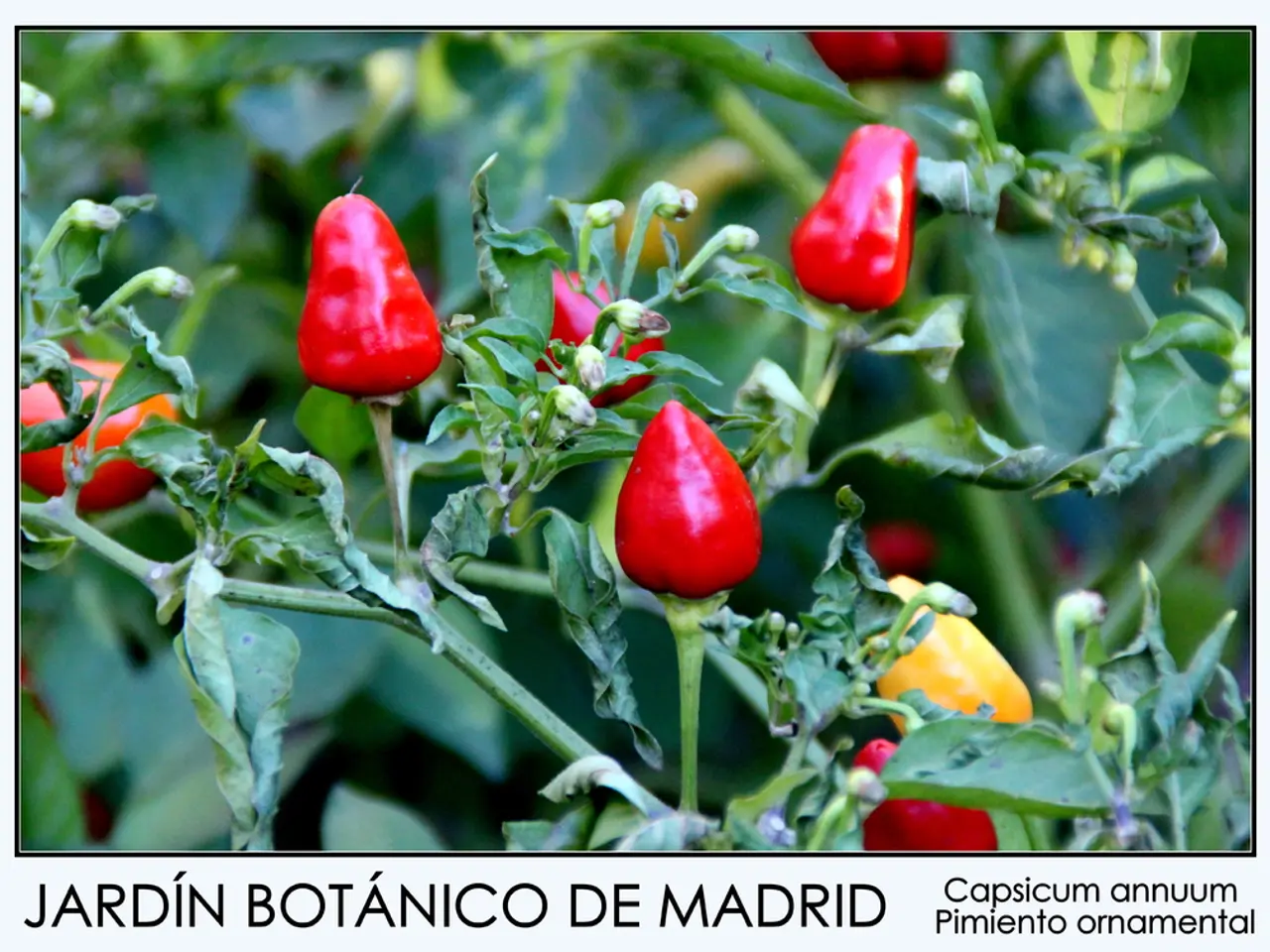The Influence of Salt on Soil and Vegetation: Ally or Adversary?
Plants and soil health are under threat due to soil salinization, a phenomenon caused by excessive salt in the soil. This issue, while not always immediately apparent, can lead to symptoms appearing in late winter or spring, or even years later.
The primary concern with salt in soil is its impact on water availability and nutrient balance in plants. The closed stomata in plants' leaves, a result of salt's effect on water availability, prevent the entry of carbon dioxide, an essential component for photosynthesis. Without photosynthesis, the plant cannot produce food energy.
Salt can cause the plant's cells to rupture from dehydration, resulting in a loss of structure, color, and energy. In high concentrations, salt can be fatal to plants. Chloride ions absorbed by the plant can interfere with photosynthesis and chlorophyll production, causing leaf burn and die-back.
Salt also competes with and binds to cell sites, mimicking the behavior of potassium, an essential nutrient for critical cell functions. This disruption of the plant's ability to absorb and utilize necessary nutrients further hinders growth. The presence of salt in the soil can also displace other essential mineral nutrients, such as potassium and phosphorus, leading to nutrient deficiencies.
Salt draws water towards itself through osmosis, causing water to leach from the roots of plants, leading to dehydration. This creates a drought-like condition that results in reduced seed germination, stunted growth, smaller leaf area, impaired photosynthesis, and overall decreased biomass.
Soil salinization occurs naturally in dry regions or areas with salty groundwater but can be accelerated by agricultural practices such as improper irrigation or summerfallowing that elevate the water table and concentrate salts near the surface. This results in visible salt crusts and degraded soil structure. Excess salt in soil leads to osmotic stress by reversing osmotic pressure gradients, preventing plants from efficiently taking up water and nutrients, and may cause nutrient toxicity and root damage.
Plants vary in their tolerance to salinity; for example, barley tolerates weakly saline soils better than wheat, while sensitive crops like sugar beets suffer even at low salinity during early growth stages.
In summary, high soil salinity reduces plant growth and yield by inducing water stress, ion toxicity, and nutrient imbalances, while also degrading soil health through salt accumulation and altered hydrology. Managing salinity involves careful irrigation, crop selection, and soil management to mitigate these negative effects.
[1] Plant Physiology: An Introduction (5th Edition) [2] Physiology of Plant Growth Substances (3rd Edition) [3] Soil and Water: The Nexus (2nd Edition) [4] Plant Nutrition: Concepts and Perspectives (4th Edition)
- In the realm of health-and-wellness and skin-care, utilizing natural remedies such as CBD oil, derived from plants, can provide beneficial therapies-and-treatments for various conditions.
- Climate change is a pressing concern in environmental-science, with potential implications for food-and-drink production, as increased temperatures can impact agricultural practices and soil health.
- Fitness-and-exercise, a crucial aspect of personal-finance investments in the lifestyle sector, can further be enhanced through technological advancements like data-and-cloud-computing, enabling personalized fitness plans and wearable health monitors.
- Plants undergoing fitness challenges from excessive soil salinity can lead to nutrient deficiencies, which might adversely affect their growth, consequently influencing the food supply and environmental-science.
- Home-and-garden enthusiasts can prevent soil salinization by implementing sustainable irrigation practices, thus ensuring the health of their plants and supporting soil-and-water conservation efforts.
- Businesses in the food-and-drink industry must consider the impacts of climate change on agriculture and soil health when developing their strategies for investing in sustainable practices and products.
- As the climate warms, the phenomenon of soil salinization could worsen, leading to reduced water availability, affecting not just plants but also local weather patterns and travel routes.
- The practice of sports requires proper nutrition, and understanding the impacts of soil health on plant nutrition can shed light on the importance of a balanced diet for athletes in maintaining their performance levels.
- Plant physiology texts such as 'Plant Physiology: An Introduction (5th Edition)' detail the intricate mechanisms of plant growth and their responses to environmental stressors like soil salinity.
- With improved soil management and technologies, it's possible to mitigate the negative effects of soil salinization on plant growth and overall yield, paving the way for a thriving and sustainable food-and-drink industry in the era of climate change and environmental-science concerns.




